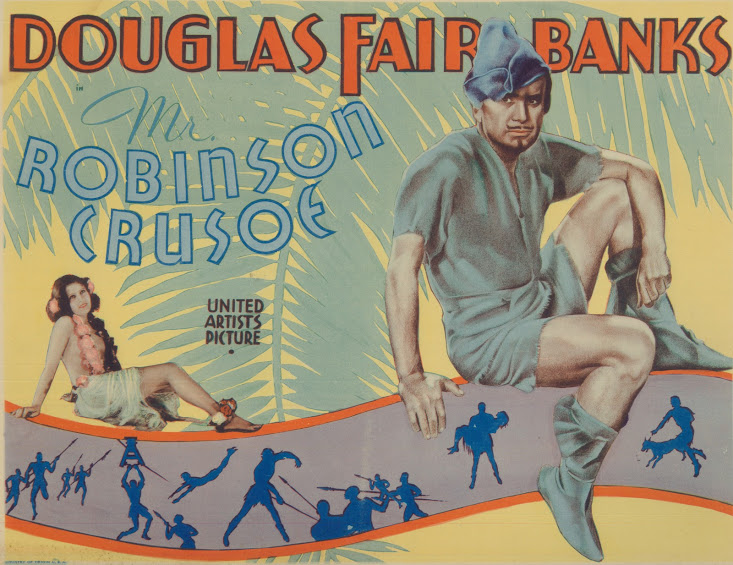

There's Always Tomorrow Limps Onto DVD
Hurtling through cyberspace comes news that Universal botched the screen ratio on its DVD release of There's Always Tomorrow, Douglas Sirk's 1956 melodrama that Europeans thought enough of to release in a pair of (done right) special editions. Two questions: For how many buyers does this matter, and who's caring about few that complain? There's Always Tomorrow is part of a six feature Barbara Stanwyck set from Universal. Retail is $49.98. The film was exhibited 1.85 widescreen in theatres (and was, I'd maintain, composed for that ratio). Since 1956, showings have been mostly full-frame and on television. The latter reveals a lot of dead space at the top which was masked out by 50's projectionists. Universal has both transfers but gave us the one that's cropped. The same thing happened several years ago when they loused up The Deadly Mantis on DVD. These were likely oversights the company would consider unimportant. Both are the same movies, after all. Who'd be concerned beyond nitpickers like yours truly and the similarly anal retentive? Bless us for wanting the best, but we'll not get respect for that. Not so long as home video divisions are staffed by those outside hardcore movie life (I'd be fired off Uni staff in a day for constantly second-guessing exec decisions). At least there is compensation of labels that do satisfy. Sony/Columbia's Hammer Suspense box for one. I'm still in disbelief that Cash On Demand and Never Take Candy From Strangers are now available on pressed disc, let alone bunched with four others equally rare.


So as to see There's Always Tomorrow properly presented, I ordered the Masters Of Cinema UK offering. Being Region 2 means you'll have to either get a multi-region player or hack your own to watch. MOC did a fine wide transfer with documentary extras and a forty-page booklet. The movie runs 84 minutes and is black-and-white. Director Sirk was something of a color specialist, that most evident in just preceded All That Heaven Allows, so reverting to B/W for this one comes unexpected. Maybe Fred MacMurray and Barbara Stanwyck weren't so big a names (by then) to justify such expense. I perused trades and found Universal's bigger selling guns trained on All That Heaven Allows, with nary an ad for There's Always Tomorrow, released but weeks behind Heaven and surely regarded by press and public as a poor relation. Sirk's melodramas were special for at least trying to intersect more with real life, however overblown general audiences might find them today. I'd be reluctant to watch one with a modern crowd. You need a persuasive host to calm the hyenas in advance. There is tendency to lump There's Always Tomorrow with so-called "women's pictures" of the era when a man's descent into conformist 50's hell is focal as here. Fred MacMurray buckles 'neath combined weight of family obligation and tempting presence of infatuated Stanwyck, middle-aged crises any number of husbands might identify with, but were they attending There's Always Tomorrow or sitting home with shoes off watching Roller Derby?

Douglas Sirk gets a lion's credit for pics bearing his directoral signature, but I note Ross Hunter's participation as named producer on all the best ones and wonder ... how much did he contribute? Interviewed Sirk spoke of "the young man" Hunter who learned a lot (presumably from him) and never interfered. The director's recall was salted with reference to Freud, Berdolt Brecht, and Oedipus, an imposing triad that certainly would have shut me up had I been inclined to press Sirk further as to Hunter's creative input. I don't know of any Hollywood product (let alone out of Universal!) that inspire such serious analysis as Sirk's. He was boxoffice when that paid in the 50's and dedicated artist when cinéastes came knocking in the 70's. You might say he kind of lucked into a brace of atomic age mellers we now applaud for exposing hypocrisies of the time (all of us being so much more enlightened). By sheer chance or maybe design, Sirk (and/or Hunter?) fed our assumptions to come about repression our parent's generation labored under. We all get to feel quite superior watching poor Fred MacMurray navigate indifferent family waters all the deeper for his surrender to Establishment precepts. Sirk characters are like bugs under modern sensibility microscopes. Our lives may suck, but not so much as hapless Fred's in his suburb prison with bourgeoisie bars. Domestic settings in There's Always Tomorrow are an art-directed Alcatraz, all lattice and banister-laden to nail down hopelessness of MacMurray's plight. Children endlessly whine (so that doesn't go on anymore?) and eavesdropping is rife (with layers of misunderstanding to result). There's even Ma Joad Darwell braying about in a maid's uniform. Rays of hope for a finish are but tentative. Sirk said he wanted to strike an even sourer note there. I'd guess 1956 male patrons all but opted for gas pipe concessions either way after seeing There's Always Tomorrow.












































